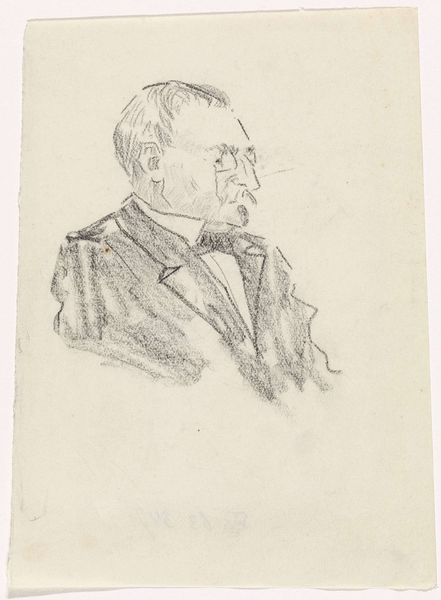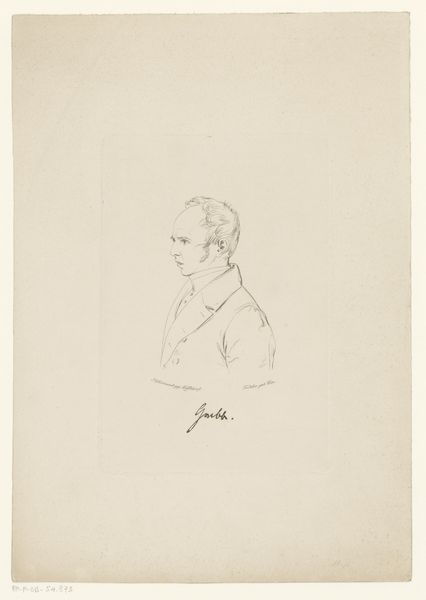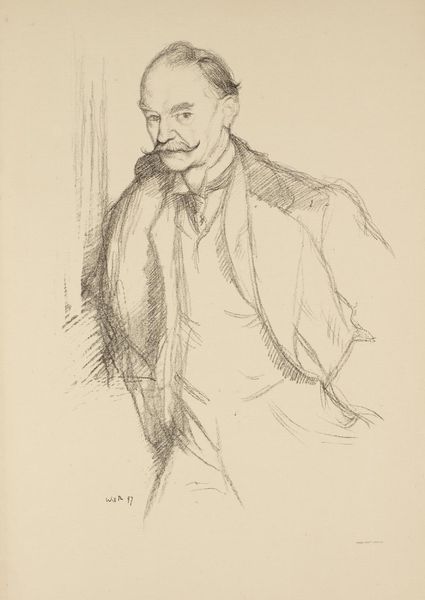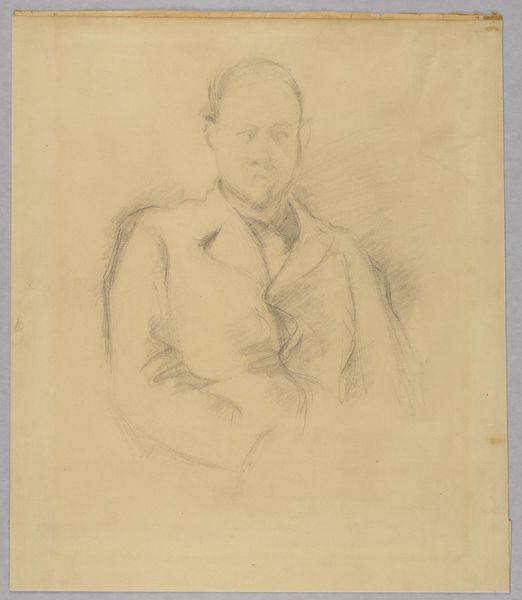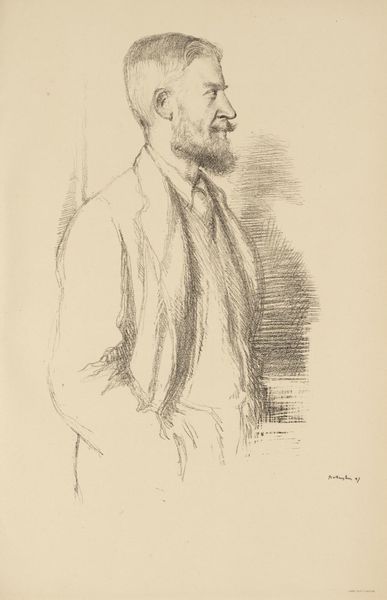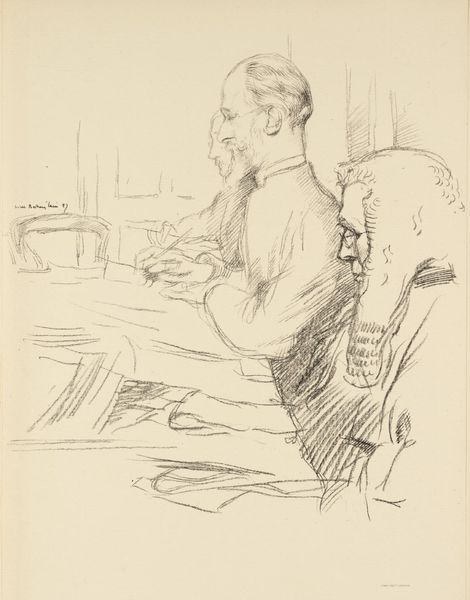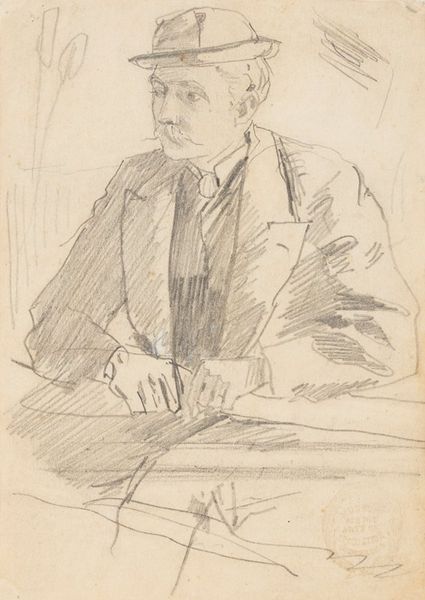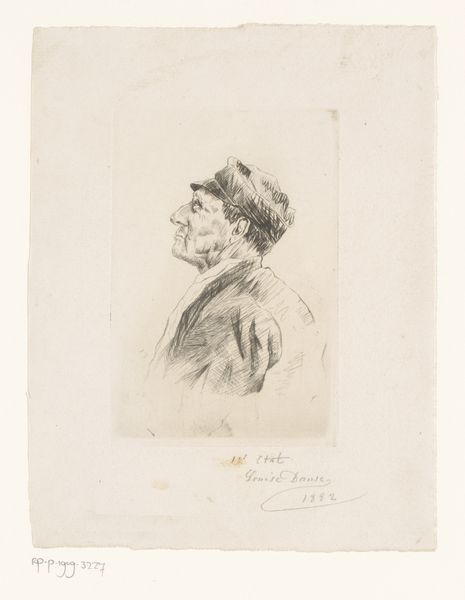
drawing, pencil
#
portrait
#
pencil drawn
#
drawing
#
impressionism
#
pencil sketch
#
pencil drawing
#
pencil
#
portrait drawing
Dimensions: height 354 mm, width 150 mm
Copyright: Rijks Museum: Open Domain
Editor: Here we have "Portret van Charles Goeneutte," a pencil drawing by Norbert Goeneutte, created before 1888. It's a delicate portrait; I’m struck by how modern it feels, even though it's over a century old. What's your perspective on this work? Curator: What strikes me is the depiction of male identity. We're presented with a bourgeois gentleman, an artist, and considering this was the era of rapid industrialisation, societal expectations regarding masculinity were quite rigid. But the sketch-like quality, the unfinished feel, softens that rigid persona. Editor: Do you think that choice was intentional, to soften that expected masculinity? Curator: Absolutely. Look at the way Goeneutte captures his brother. Not posed, not stoic, but with a sense of vulnerability. How does that disrupt, or perhaps inform, traditional notions of power associated with the male gaze within portraiture of the time? This artwork becomes part of a bigger conversation, a more radical view. Editor: That's interesting! I was mainly focusing on the artistic style and the technique but seeing how this reflects gender and power makes it so much more. Curator: Precisely. It also subtly challenges prevailing social norms, creating space for dialogues on identity. I'd prompt you to consider the gaze of the sitter. Where does that take you in considering intersectionality in portraiture? Editor: It certainly changes how I appreciate not only this piece but all portraiture going forward. Thank you. Curator: And thank you. Art becomes powerful when we unpack its connections to societal narratives, when we invite it into conversations on equality and representation.
Comments
No comments
Be the first to comment and join the conversation on the ultimate creative platform.
